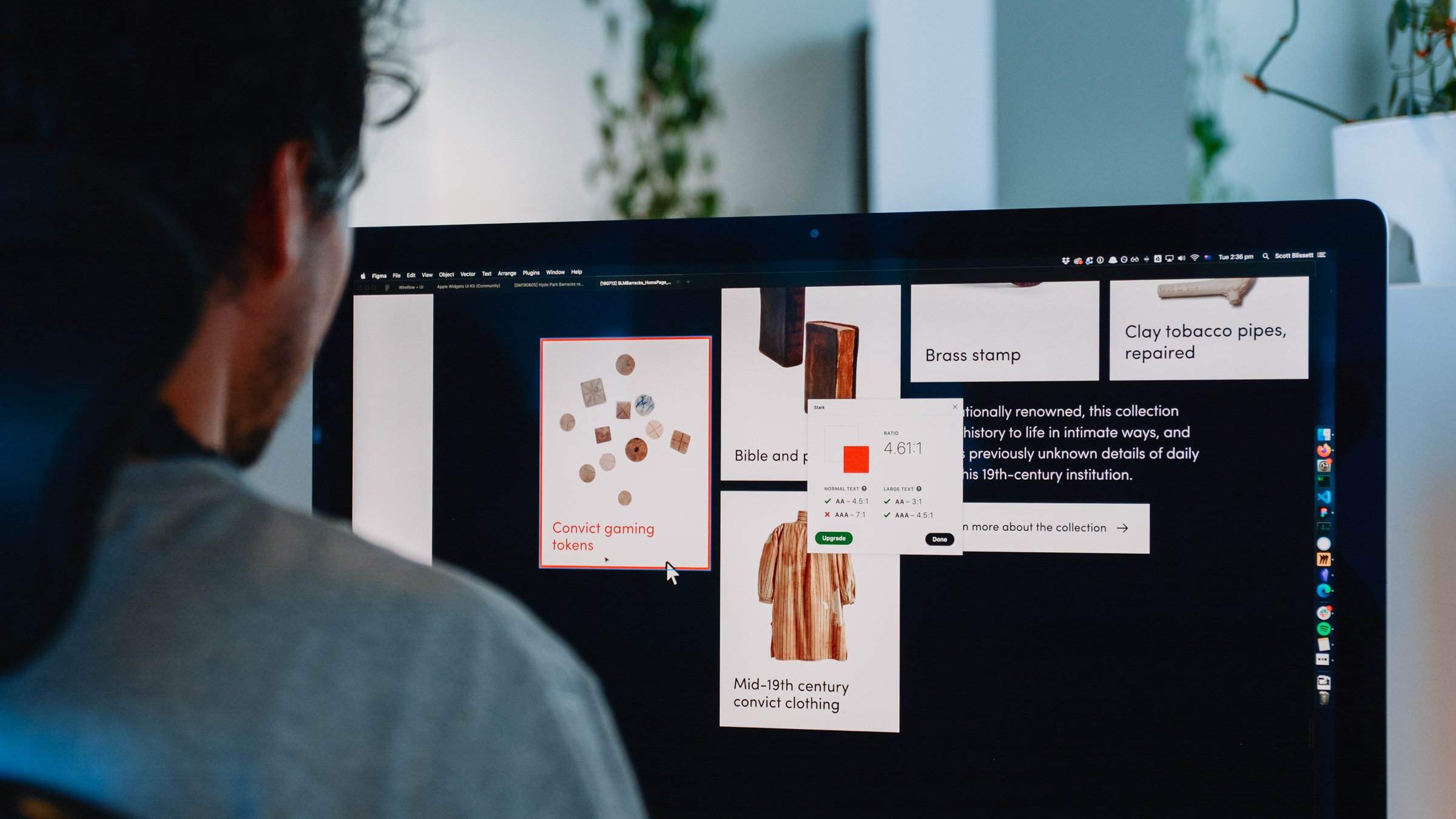An inclusive telling of Sydney’s history
Sydney Living Museums
An inclusive telling of Sydney’s history
Sydney Living Museums
The Hyde Park Barracks provides its visitors with an impressive record of early colonial Australia. The Barracks' has a rich history, originally providing housing for convicts, it has also served as an immigration depot, asylum, law courts and today as government offices and museum.
Working closely with the Hyde Park Barracks Museum (HPBM) team, Pollen was tasked to create a Digital Inclusivity Plan for the their visitor website experience as part of the 2020 museum re-opening.

Our remit was to provide recommendations on how to create inclusive designs and content to assist the ticketing experience, ensuring that the widest possible audience could access the physical visitor experience.
In taking on this project, we gained a more advanced understanding on what is 'Inclusive Design', which was defined in 2000 by the UK Government as "products, services and environments that include the needs of the widest number of consumers".
We had a clear plan of attack to ensure we took a methodical approach to delivering our recommendations.
These steps included:
- Define the audience types and their individual needs
- Recommend accessibility best practices in digital design
- Define the role of content in creating inclusive experiences
- Demonstrate how it all comes together in inclusive designs for the HPBM visitor landing page


Who are we designing for?

We defined the audience types and needs by conducting a user journey workshop, focused on capturing the content items and experiences stakeholders felt needed to be represented.
Participants were paired and allocated a persona to imagine walking this journey in their shoes. This empathy session provided a further understanding of the users context when engaging with the Barracks experience.
Our definition of this audience included physical disabilities such as:
- Visual - Colour blindness, low vision and blindness.
- Cognitive (Learning) - ADHD, autism, dyslexia and seizures.
- Hearing - Hard of hearing and deafness.
- Physical - Amputation, paralysis and hand tremors.
- Speech - Muteness and stuttering.
In addition to these physical disabilities, we also included culturally diverse audiences including CALD - (Culturally and linguistically diverse) who are those born overseas from countries in which English is not the main language - and First Australians which recognises Aboriginal and Torres Strait Islander peoples as the first peoples of Australia.
Only by understanding everybody's cultural background, literacy level, disability barriers, age, and technical matureness can we design and build experiences that include as many people as possible.
Getting the basics right

As a standard development recommendation we adhered to the WCAG 2.1 standards. The key was to decide which of the 3 compliance levels, A, AA, or AAA, of the WCAG would be achievable with the development team, with the current expectation being a AA standard.
We were conscious that implementing web accessibility standards can not only assist those with disabilities to better understand and navigate the web, but can also benefit those with temporary or conditional disabilities such as having a broken arm or the impacts of ageing.
Inclusive writing
Writing inclusive content allows a larger audience to connect with the narrative being told. We took into account the Australian government recommendation to aim for age 9 reading level which is around year 3 or year 4. What this means is to ensure the content is written in plain English, not to ‘dumb down’ the information, and to avoid abbreviations and colloquialisms. Overly complex passages can exclude some members of the HPBM audience.

In completing this project, we learnt that we have the power to either include or exclude people from the experiences we design through the many decisions that we make. It’s our responsibility to be aware of the wider audience that may engage with our work and make the right decisions to accommodate them.
Image Credits:
South-west corner of Hyde Park Barracks. Photo © Anna Kucera / James Horan Photography Pty. Ltd. for Sydney Living Museums
Convicts’ Colony. Photo Brett Boardman for Sydney Living Museums
